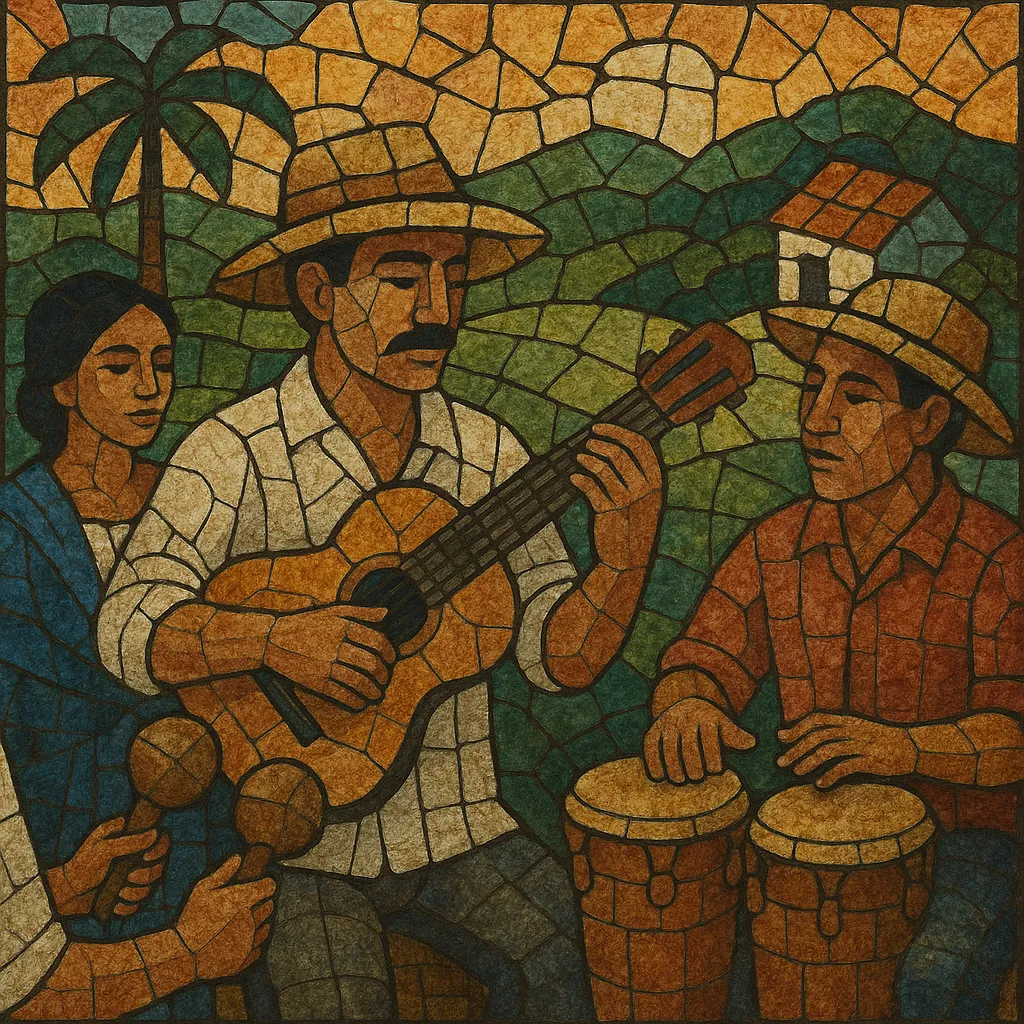Guajira is a Cuban rural song-and-dance style that evokes the life and landscape of the countryside (the world of the guajiro, or peasant). It typically features gentle, lyrical melodies in major keys, a relaxed but swaying groove, and strophic verses often set to poetic décimas.
Instrumentally, guajira draws on Spanish guitar traditions alongside Cuban string instruments like the tres, and it often incorporates light Afro-Cuban percussion (claves, bongó, maracas) and call-and-response coros. In the 20th century it fused with son practices to create the widely known guajira-son, whose guajeo patterns and montuno sections made the style more dance-oriented.
The best-known example associated with the style is Guantanamera, popularized in the mid‑20th century and later adopted by international folk singers. While there is also a separate flamenco "guajira" in Spain, the Cuban guajira is the original rural genre that inspired ida y vuelta exchanges across the Atlantic.
Guajira took shape in rural Cuba in the late 1800s, where Spanish poetic and guitar traditions encountered creole musical practices. Singers commonly set décimas (ten-line stanzas) to simple, lilting accompaniments, and performed at guateques (country gatherings). Its melodic phrasing and lyric themes—landscapes, love, rural pride—situated guajira as a pastoral counterpart to more urban styles.
By the early 1900s, guajira moved from the countryside to urban cafés, salons, and theaters, where it intersected with Cuban trova and the cosmopolitan currents of bolero and habanera. Arrangers began to codify characteristic guitar and tres figures and to incorporate light percussion, shaping a more performative, city-friendly version of the rural idiom.
As son cubano’s ensemble format spread, guajira fused with son practices into guajira-son: verse-and-refrain structures with coro–pregón, tres guajeos, and a concluding montuno for dancing. Radio and recording helped standardize the sound and repertory. Joséíto Fernández’s broadcasts of Guajira Guantanamera became emblematic, and performers like Guillermo Portabales refined a suave, guitar-led guajira aesthetic.
The melody of Guantanamera achieved global fame; folk interpreters such as Pete Seeger adapted it with José Martí’s poetry, introducing guajira’s pastoral ethos to international audiences. Meanwhile, Cuban ensembles continued to record both traditional guajiras and guajira-son pieces, keeping the style in the broader current that later fed salsa’s repertoire.
The Buena Vista Social Club wave in the late 1990s renewed worldwide interest in Cuba’s classic genres, and artists such as Compay Segundo and Eliades Ochoa brought guajira back to the foreground. Today, guajira remains a touchstone of Cuban identity—performed in traditional contexts, stylized concert settings, and contemporary fusions.


